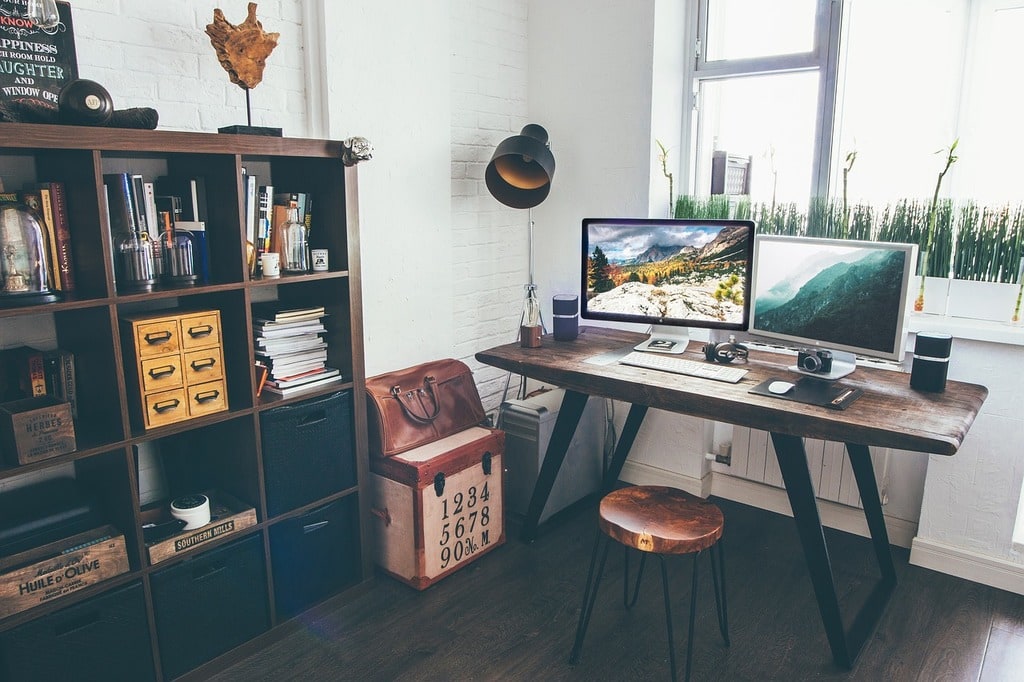Creating an efficient home office is essential for productivity and comfort. With the rise of remote work, having a dedicated space that promotes focus and efficiency has become a necessity for many. This guide will help you set up a home office that meets your needs and enhances your working experience.
Optimizing Your Home Office for Maximum Productivity
When setting up a home office, location is the first critical decision. Choose a quiet area, away from high-traffic parts of the house. This minimizes distractions and allows for better concentration. If possible, select a room with a door you can close, signaling to others that you are working and should not be disturbed.
Lighting plays a significant role in creating a productive workspace. Natural light is best, as it boosts mood and energy levels. Position your desk near a window to take advantage of daylight. If natural light is limited, invest in quality artificial lighting. A combination of ambient, task, and accent lighting can reduce eye strain and create a comfortable atmosphere.
Choosing the Right Furniture
The right furniture can make a substantial difference in your home office’s functionality and comfort. Start with an ergonomic chair that provides adequate lumbar support and is adjustable to fit your body. Spending long hours in an uncomfortable chair can lead to back pain and decreased productivity.
Your desk should be spacious enough to hold your computer, accessories, and other essential items without being cluttered. Consider a desk with built-in storage or add shelves and organizers to keep the workspace tidy. A clean, organized desk can enhance focus and efficiency.

Technology and Connectivity
Reliable technology is the backbone of any efficient home office. Ensure your computer is up to date and capable of handling your workload. Invest in a good monitor, keyboard, and mouse to prevent strain and increase comfort during long work hours.
Connectivity is equally important. A high-speed internet connection is vital for smooth communication and access to online resources. If your home has weak Wi-Fi signals in your office area, consider using a wired connection or a Wi-Fi extender.
Personalizing Your Space
Personalization can make your home office a more pleasant place to work. Decorate with items that inspire you, such as artwork, plants, or family photos. Plants not only add a touch of nature but also improve air quality and reduce stress.
Here are some elements to consider adding to your home office:
- A comfortable chair and desk setup
- Proper lighting (natural and artificial)
- Efficient storage solutions
- High-speed internet connection
- Personal touches like plants and artwork
Managing Noise and Distractions
Noise and distractions are common challenges in a home office. To manage noise, use noise-canceling headphones or a white noise machine. These tools can help you stay focused by blocking out background sounds.
Establishing boundaries with family members or roommates is also essential. Communicate your work schedule and the importance of minimizing interruptions during work hours. Setting these expectations can create a more productive environment.
Maintaining a Healthy Work-Life Balance
An efficient home office is not just about productivity; it also supports a healthy work-life balance. Set clear working hours and stick to them. Taking regular breaks is crucial for maintaining focus and preventing burnout. Use tools like timers or apps to remind you to take short breaks throughout the day.
Ensure your workspace is used only for work. This separation helps signal to your brain that it is time to work when you are in your office and time to relax when you leave. Maintaining this boundary can improve both productivity and mental health.
Continuous Improvement
Your home office setup should evolve with your needs. Regularly assess your workspace and make adjustments as needed. This might include rearranging furniture, upgrading technology, or adding new elements that enhance comfort and productivity.
In conclusion, creating an efficient home office requires thoughtful planning and consideration of various factors, from location and lighting to furniture and technology. By prioritizing these elements and regularly evaluating your setup, you can create a workspace that not only boosts productivity but also supports your overall well-being.